Planning a trip to Japan and looking for the perfect travel itinerary? SIXT.VN offers expert travel advice and convenient services to help you create an unforgettable journey through Japan. From airport transfers to hotel bookings and guided tours, we’ve got you covered.
Japan, with its blend of ancient traditions and modern innovation, captivates travelers worldwide. Whether you’re drawn to the bustling streets of Tokyo, the serene temples of Kyoto, or the natural beauty of Mount Fuji, a well-planned Travel Itinerary To Japan is essential. Discover how SIXT.VN can assist you in crafting the ideal trip, ensuring a seamless and enriching experience with reliable services like airport pickup, accommodation options, and curated tour packages. This guide will provide you with valuable insights and tips to make your Japan travel itinerary unforgettable.
1. General Tips for Visiting Japan as First-Timers
Navigating Japan for the first time can be an exciting yet daunting experience. Here are some essential tips to ensure a smooth and enjoyable trip:
-
Download Japanese Google Translate to Your Phone Offline: Language barriers can be challenging. According to a 2023 study by the Japan National Tourism Organization (JNTO), only 30% of Japanese locals in tourist areas speak English fluently. The Google Translate app can be a lifesaver, allowing you to translate menus, signs, and conversations instantly.
-
Get a Data eSIM: Staying connected is crucial. An eSIM provides convenient and affordable data access without the need for a physical SIM card. This allows you to use maps, translation apps, and stay in touch with family and friends seamlessly.
-
Reserve Tickets Ahead of Time: Japan is a popular destination, and tickets for attractions and transportation often sell out quickly. Booking in advance ensures you don’t miss out on must-see sights and experiences.
-
Learn How to Handle Your Luggage While Traveling: Moving between cities can be cumbersome with luggage. Utilize services like Takuhaibin to send your luggage ahead or store it in coin lockers at train stations. This allows you to travel hands-free and enjoy your journey.
-
Open-Jaw Your Flight Ticket: If you plan to follow the classic “Golden Route” (Tokyo to Kyoto/Osaka), consider an open-jaw ticket. Fly into one city (e.g., Tokyo) and out of another (e.g., Osaka) to save time and avoid backtracking.
-
Bring Some Yen: While Japan is becoming more digital, cash is still widely used, especially in smaller establishments and rural areas. Having yen on hand ensures you can make purchases easily.
-
Use ATMs at Convenience Stores: Convenience stores like 7-Eleven have reliable ATMs that accept foreign cards. These ATMs are a convenient way to withdraw cash when needed.
-
Wear Comfortable Walking Shoes: You’ll be doing a lot of walking, so comfortable shoes are essential. Opt for shoes designed for walking to avoid sore feet and blisters.
-
Download the Cities’ Google Maps to Your Phone: Downloading offline maps allows you to navigate without relying on mobile data. This is especially useful in areas with poor connectivity.
-
Fast Track Your Arrival in Japan: Use the Visit Japan Web service to complete immigration and customs procedures online before you arrive. This can save you time and hassle at the airport.
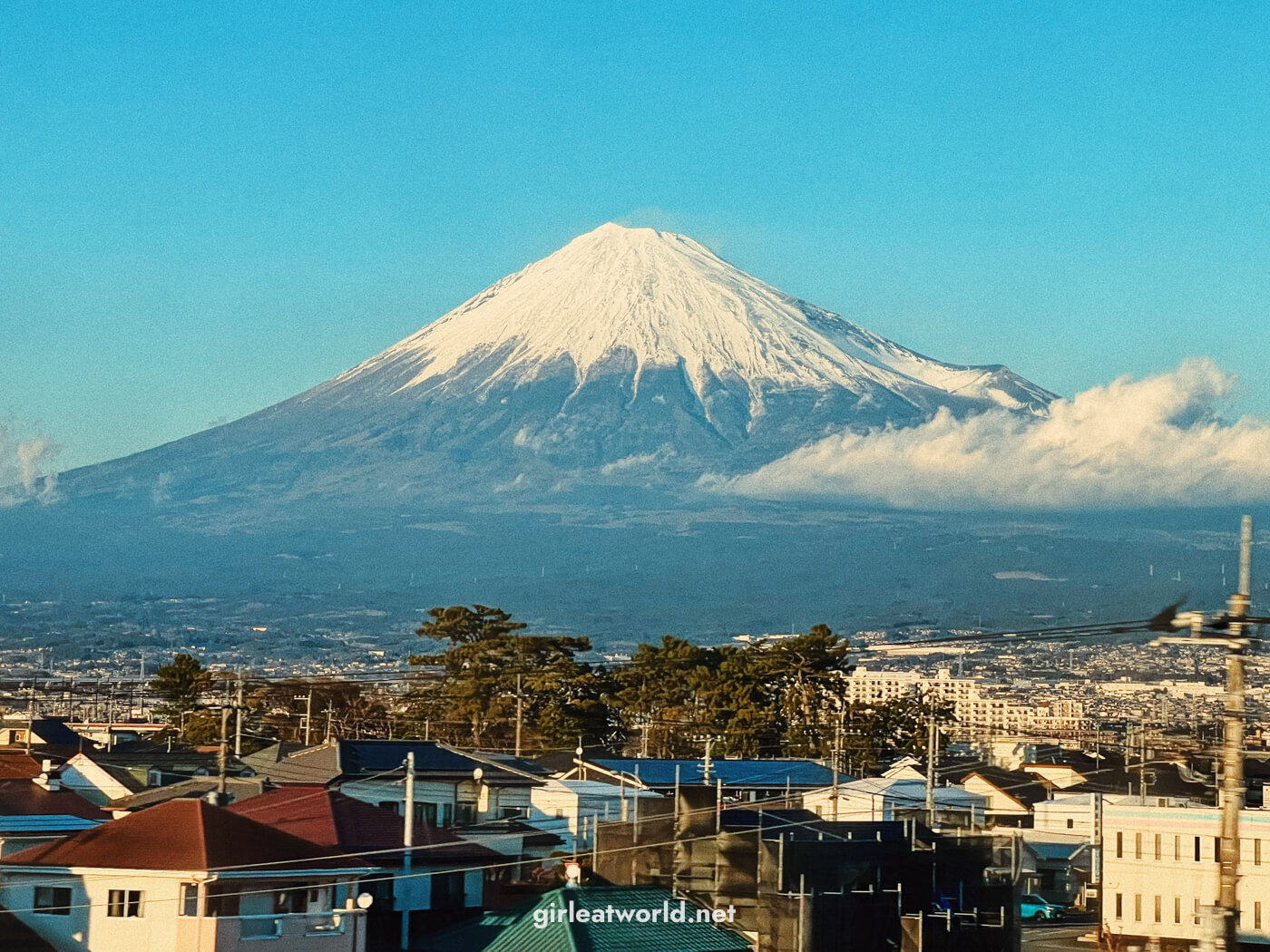 Mount Fuji from Shinkansen ride from Tokyo to Osaka
Mount Fuji from Shinkansen ride from Tokyo to Osaka
Mount Fuji view from Shinkansen bullet train window.
2. What is Tax-Free Shopping in Japan?
Tax-free shopping in Japan is a fantastic benefit for tourists, allowing you to save on purchases. Here’s what you need to know:
- Eligibility: Tourists can shop tax-free at participating stores for purchases over 5,000 yen (approximately $35 USD).
- Consumption Tax: The consumption tax in Japan is 10%, so this is a significant discount.
- Tax-Free Symbol: Look for the tax-free symbol at the store to ensure you can shop tax-free.
- Passport: You must bring your passport to be eligible. The store will check your immigration stamp to verify your tourist status.
- QR Code: You can obtain a QR code from Visit Japan Web for tax-free shopping, but it’s wise to bring your physical passport as some shops may not accept the QR code yet.
- Types of Items:
- Consumables (food, drinks, cosmetics): These items will be placed in a sealed bag and cannot be consumed in Japan.
- General Goods (clothes, accessories, electronics): These can be used freely.
- How it Works: You simply pay 10% less on the spot at the point of purchase. This is different from tax refund systems in other countries where you get a refund at the airport.
3. What is the Best Way for Handling Your Luggage in Japan?
Managing luggage can be a challenge when traveling between cities in Japan. Here are several options:
-
Takuhaibin: Send Your Luggage to Your Next Destination:
- This is a popular service in Japan for sending luggage ahead of time to your next accommodation or even the airport.
- Benefits: Travel hands-free, avoid carrying heavy luggage on trains.
- Luggage Delivery Services:
- Yamato Transport (Kuroneko Yamato): Widely used, reliable service.
- Japan Post: Another trusted option.
- Sagawa Express: Known for its efficiency.
-
Make Use of the Lockers at Train Stations:
- Major train stations in Japan have coin lockers for storing luggage.
- Sizes: Lockers range from 300 to 700 yen depending on the size.
- Usage: Ideal for storing luggage if you’re checking out early or arriving before check-in time.
- Limitations: Lockers are generally for one-day use, and availability can be limited at popular stations.
-
Tourist Information Centers:
- Many tourist information centers offer luggage storage services.
- Cost: Reasonably priced, similar to coin lockers.
-
Storing Your Luggage at the Hotel:
- Hotels in Japan will often keep your luggage for you, either before check-in or after check-out.
- Benefits: Convenient and reliable.
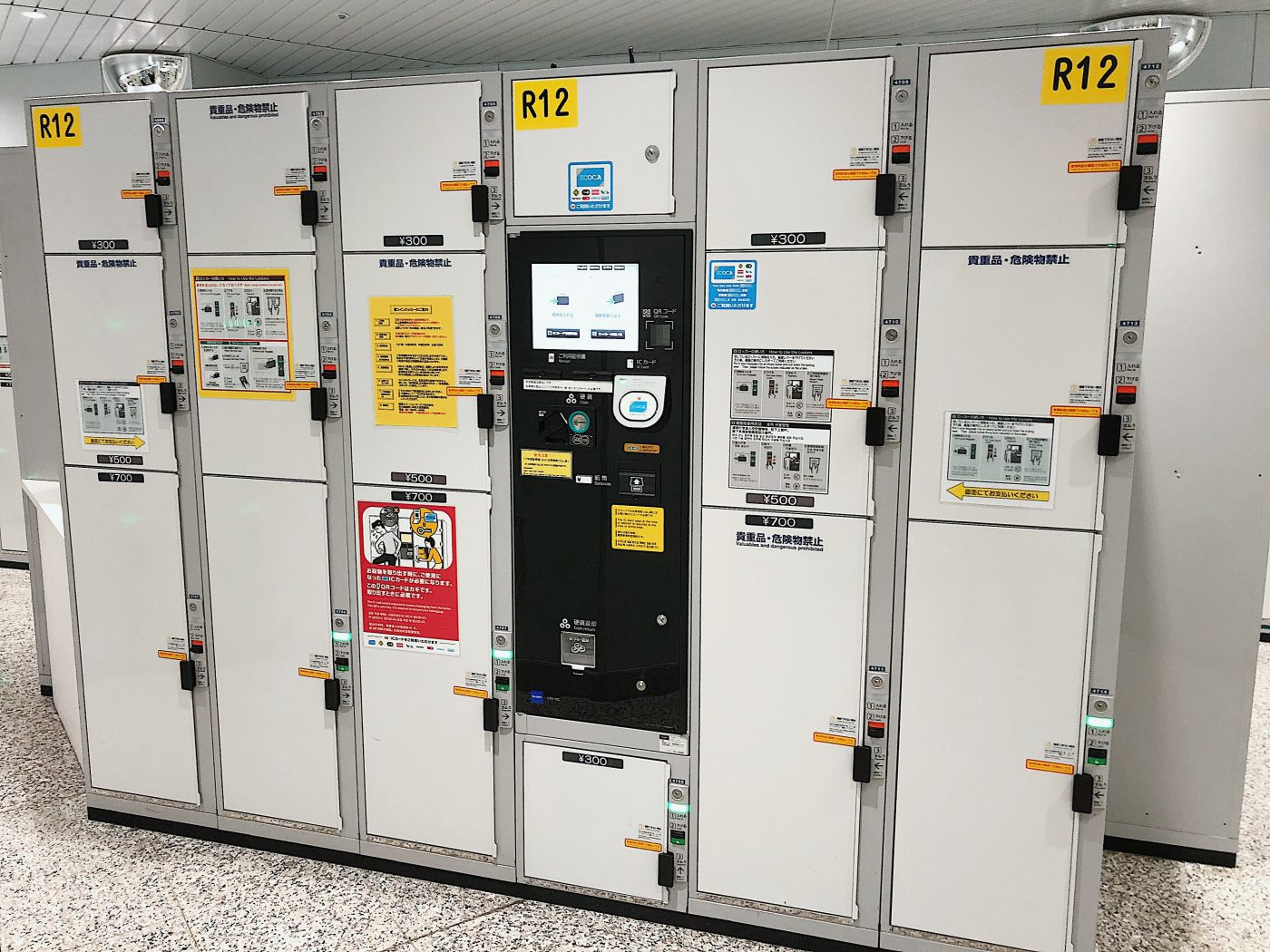 Coin lockers at JR station
Coin lockers at JR station
Various sizes of luggage lockers at Japan Rail station.
4. What are Japanese Rules and Etiquette: Do’s and Don’ts?
Understanding Japanese customs and etiquette is essential for a respectful and enjoyable visit. Here are some key points:
-
Be Considerate and Aware of Your Surroundings:
- Japanese culture emphasizes consideration for others.
- Do: Be quiet on public transportation, avoid loud conversations, and set your phone to silent mode.
-
Take Off Shoes When Entering a House:
- Remove your shoes at the entrance and switch to indoor slippers if provided.
- Context: This practice is common in homes and some traditional restaurants.
-
Tipping is Not Practiced in Japan:
- Tipping is not expected and can sometimes be seen as rude.
- Exception: Exceptional service is already included in the price.
-
Carry Your Trash with You:
- Public trash bins are scarce due to complex trash sorting rules and security concerns.
- Tip: Bring your trash back to your hotel for proper disposal.
-
Don’t Eat While Walking:
- Eating while walking (tabearuki) is generally considered impolite.
- Exception: This rule is often relaxed at festivals where food stalls are present.
-
Don’t Be Surprised by Otoshi (Compulsory Appetizer):
- Some restaurants and izakaya (Japanese bars) serve a small appetizer upon seating.
- Note: This is a non-optional, paid appetizer that serves as a table charge.
-
Be Completely Naked in an Onsen:
- When visiting an onsen (hot spring), you must be completely naked.
- Reason: Wearing swimsuits or underwear is considered unhygienic.
5. Useful Daily Phrases in Japanese
Knowing a few basic Japanese phrases can greatly enhance your travel experience. Here are some helpful phrases:
| Phrase | Japanese |
|---|---|
| Yes | Hai |
| No | Iie |
| Excuse me | Sumimasen |
| Thank you | Arigato gozaimasu |
| Good Morning | Ohayou |
| Good afternoon | Konnichiwa |
| Please | Onegaishimasu |
| Can I have the bill, please? | Okaikei onegaishimasu |
| How much is this? | Kore wa ikura desu ka? |
| Where is the toilet? | Toire wa doko desu ka? |
| Let’s eat | Itadakimasu |
| Thank you for the meal | Gochisosamadeshita |
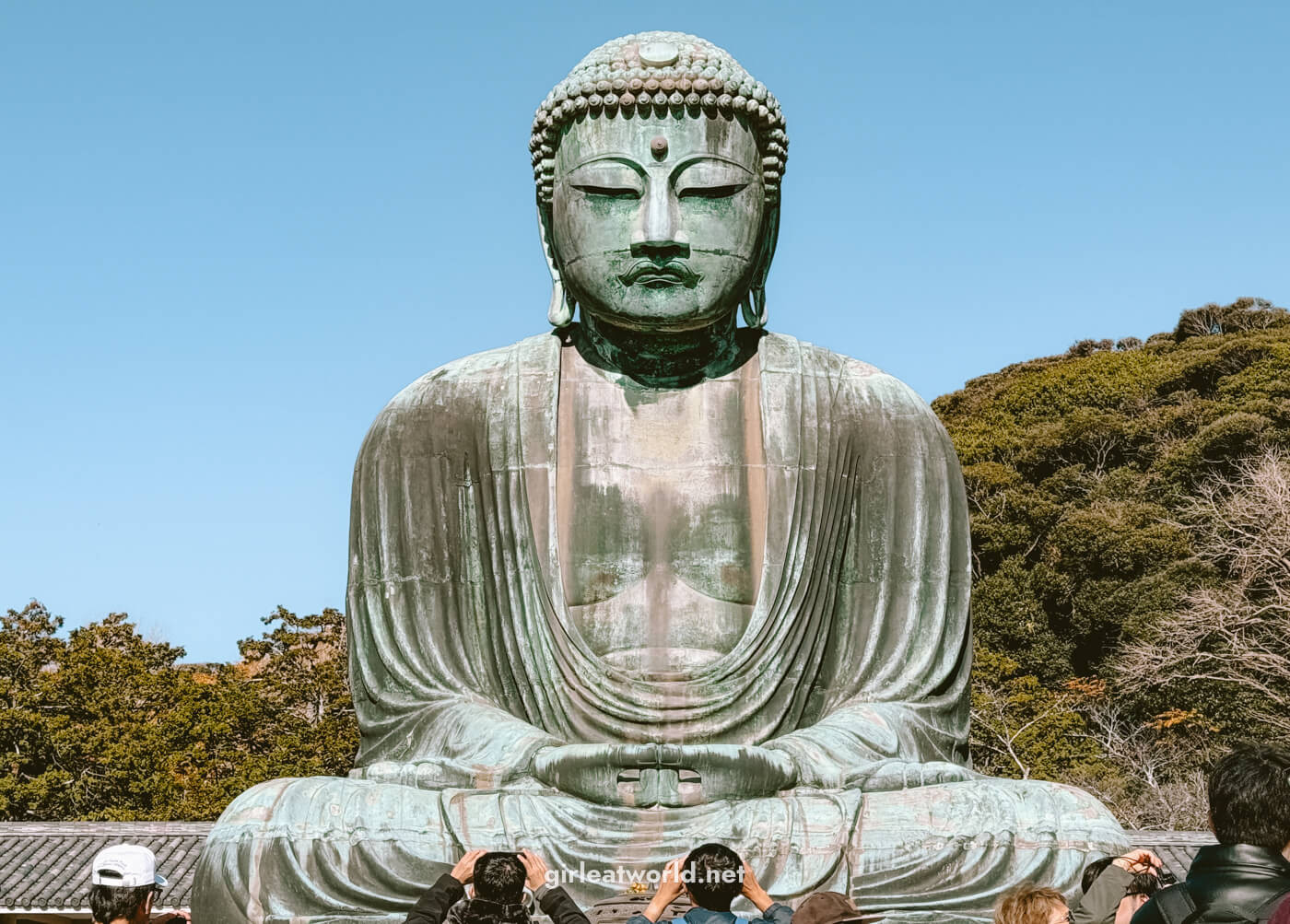 Kamakura: Daibutsu at Kotoku-in
Kamakura: Daibutsu at Kotoku-in
Great Buddha statue at Kotoku-in Temple in Kamakura.
6. What are the Steps for Entering Japan?
To ensure a smooth entry into Japan, follow these steps:
-
Japan eVisa – Apply for Japan Visa Online (If You Need One):
- Check if your country has a visa exemption arrangement with Japan. If not, you’ll need to apply for a visa.
- Electronic Visa: Residents of certain countries may be eligible for the Japan electronic visa, which can be applied for online.
-
Visit Japan Web for Immigration and Customs:
- Use Visit Japan Web to complete immigration procedures and customs declarations online before you arrive.
- Benefits: Saves time and simplifies the arrival process.
7. How Many Days Should I Spend in Japan?
The ideal length of your trip depends on your interests and available time. Here are some recommendations:
- At Least 10 Days: This allows you to explore Tokyo, Kyoto, Osaka, and Nara, providing a comprehensive Japanese experience.
- 5 Days: Sufficient for first-timers to get a feel for the country. Stay in Tokyo and take a short trip to Mount Fuji or Hakone.
Two women wearing Kimonos in Kyoto.
8. What is the best way for Getting To and From the Airport?
Several options are available for airport transfers in Japan:
-
Airport Express Trains:
- Major cities like Tokyo and Osaka have airport express lines that connect the airport to the city center.
- Example: Narita Express and Keisei Skyliner in Tokyo.
-
Private Airport Transfer:
- Hiring a private car can be convenient, especially for groups or those with a lot of luggage.
- Benefits: Door-to-door service, comfortable, and hassle-free.
SIXT.VN offers reliable and comfortable airport transfer services in Japan. Our professional drivers ensure a smooth and stress-free journey from the airport to your hotel. Book your airport transfer with SIXT.VN for a seamless start to your trip.
9. How to get around in Japan?
Japan offers a variety of transportation options for getting around:
-
Taking Shinkansen When Moving From One City to Another:
- Shinkansen (bullet trains) are the most popular way to travel between major cities.
-
Driving and Renting a Car:
- A great option for exploring destinations not well-served by trains, especially in rural areas.
- SIXT.VN Advantage: SIXT.VN offers car rental services in Japan, providing you with the freedom to explore at your own pace. Our rental cars are well-maintained and come with GPS navigation to help you navigate unfamiliar roads.
-
Domestic Flight:
- Flying domestically can save time and money compared to trains for longer distances.
-
Getting Around Within a City Using Public Transport:
- Local trains are convenient for traveling within major cities like Tokyo and Osaka.
- IC Cards: Use IC cards like SUICA, PASMO, or ICOCA for easy payment on local trains and buses.
-
Taking a Taxi in Japan:
- Taxis are readily available but can be expensive, especially in cities like Tokyo.
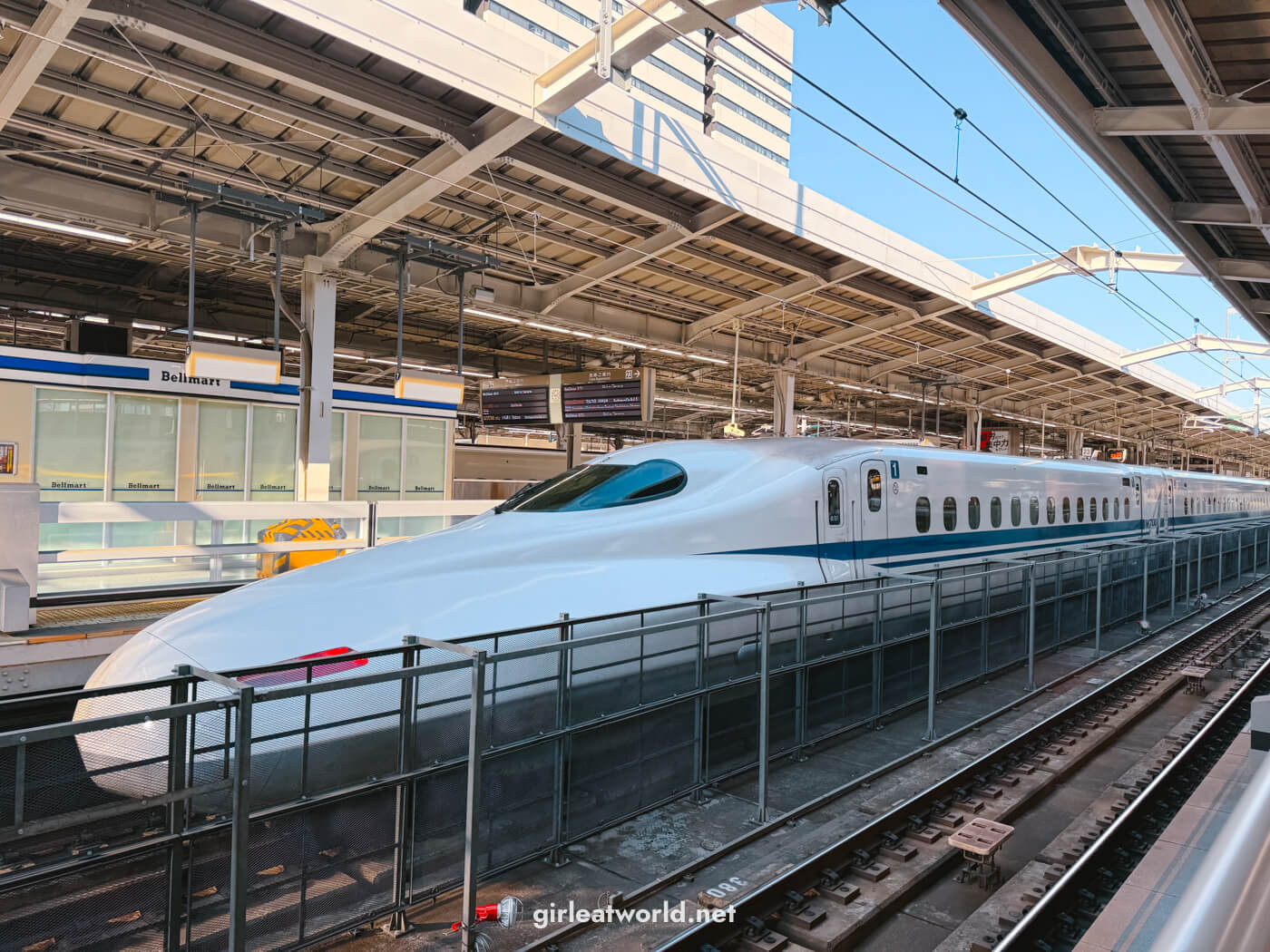 Shinkansen Bullet Train
Shinkansen Bullet Train
A view of the exterior of the Shinkansen bullet train.
10. What are the Seasons in Japan: When is the Best Time to Go to Japan?
The best time to visit Japan depends on your preferences:
-
Winter (December to End of February):
- Pros: Sunny days, high visibility of Mount Fuji, excellent for skiing.
- Cons: Cold weather.
-
Spring (March to May):
- Pros: Mild weather, cherry blossom season (Sakura).
- Cons: Most popular time, crowded, potential for temperature fluctuations.
-
Summer (June to September):
- Pros: Music festivals, traditional summer festivals (Natsu Matsuri).
- Cons: Hot, humid, rainy, potential for typhoons.
-
Autumn (October to Early December):
- Pros: Second most popular season, beautiful autumn leaves (Momijigari).
- Cons: Typhoon season.
11. Costs in Japan: How Much Does a Trip to Japan Cost?
The cost of a trip to Japan varies depending on your travel style and preferences. Here are some quick estimates:
- Simple Meals from Convenience Store: 300 to 1,000 yen per meal.
- Meals at a Restaurant: 1,500 to 2,500 yen per meal at regular restaurants.
- Accommodation: Approximately 20,000 yen a night for a decent hotel for two people.
- Transport: About 800 – 1,000 yen a day if using the train.
12. The 10-Day Golden Route Itinerary for First-Time Visitors
The “Golden Route” is a popular itinerary that showcases the best of Japan. Here’s a suggested 10-day itinerary:
Days 1 to 3: Tokyo
-
Activities:
- Walk through Yoyogi Park, Harajuku, Omotesando, and Roppongi.
- Explore Shibuya and Shinjuku.
- Visit Akihabara, Ueno Park, and Asakusa.
-
SIXT.VN Recommendation:
- Book a comfortable hotel in a central location through SIXT.VN to easily access Tokyo’s main attractions.
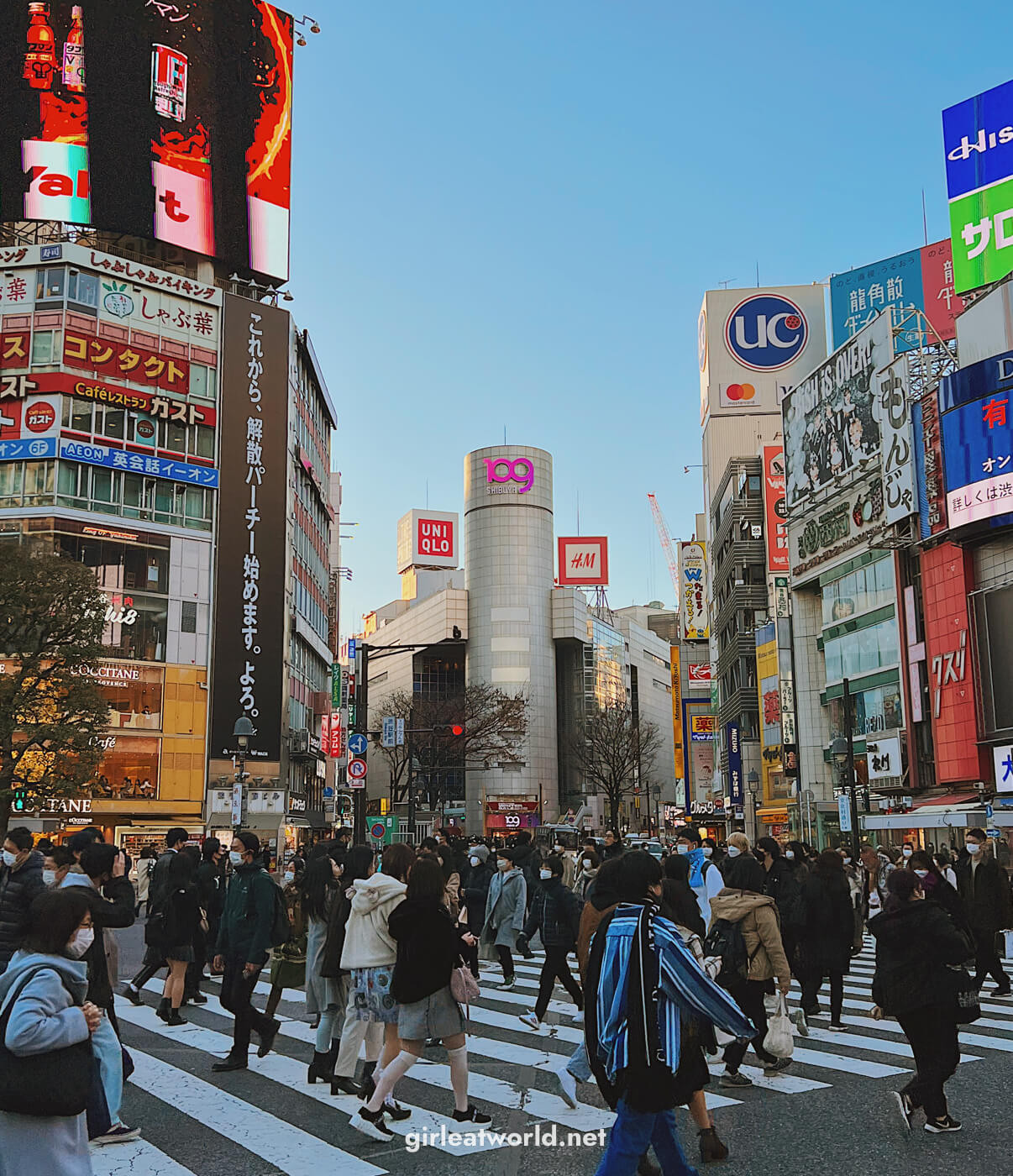 Shibuya Scramble
Shibuya Scramble
The famous Shibuya scramble crossing in Tokyo.
Days 4 to 5: Hakone or Lake Kawaguchi
-
Option 1: Hakone
- Enjoy views of Mount Fuji, nature walks, and shrines.
- Follow the Hakone loop.
-
Option 2: Fuji Five Lakes
- Experience the slow mountain life with trekking, onsen, and lake walks.
-
SIXT.VN Recommendation:
- Consider renting a car from SIXT.VN for easy access to Hakone or Lake Kawaguchi, allowing you to explore the region at your own pace.
Days 6 to 7: Kyoto
- Activities:
- Visit Fushimi Inari Taisha and Kiyomizu-dera.
- Stroll around Higashiyama district.
- Visit Arashiyama.
Day 8: Nara
- Activities:
- Visit Todai-ji and interact with Sika deer.
Days 9 to 10: Osaka
-
Activities:
- Visit Osaka Castle and Dotonbori.
- Explore Shinsekai and go up Tsutenkaku Tower.
-
SIXT.VN Recommendation:
- Use SIXT.VN for reliable transportation options, including private transfers, to travel between cities and explore local attractions.
13. Other Places in Japan Worth Checking Out
If you’re staying in Japan for more than 10 days, here are some additional destinations:
-
Short Trips from Tokyo:
- Nikko, Lake Kawaguchi, Kamakura.
-
Short Trips from Osaka:
- Kyoto, Nara, Himeji, Minoh.
-
Self-Driving Itinerary Around Nagano Prefecture.
-
Hokkaido:
- Sapporo, Hakodate, Niseko.
-
Kyushu:
- Fukuoka, Kumamoto, Nagasaki, Kagoshima.
14. What to Eat in Japan?
Japan offers a diverse culinary scene beyond ramen and sushi. Here are some must-try dishes:
- Ramen: Try regional variations like miso ramen and tonkotsu ramen.
- Sushi: Experience fresh, high-quality sushi.
- Tempura: Enjoy lightly battered and deep-fried seafood and vegetables.
- Okonomiyaki: A savory pancake with various fillings.
- Takoyaki: Octopus balls, a popular street food in Osaka.
SIXT.VN can help you discover the best local eateries and food tours, ensuring you have a memorable culinary experience in Japan.
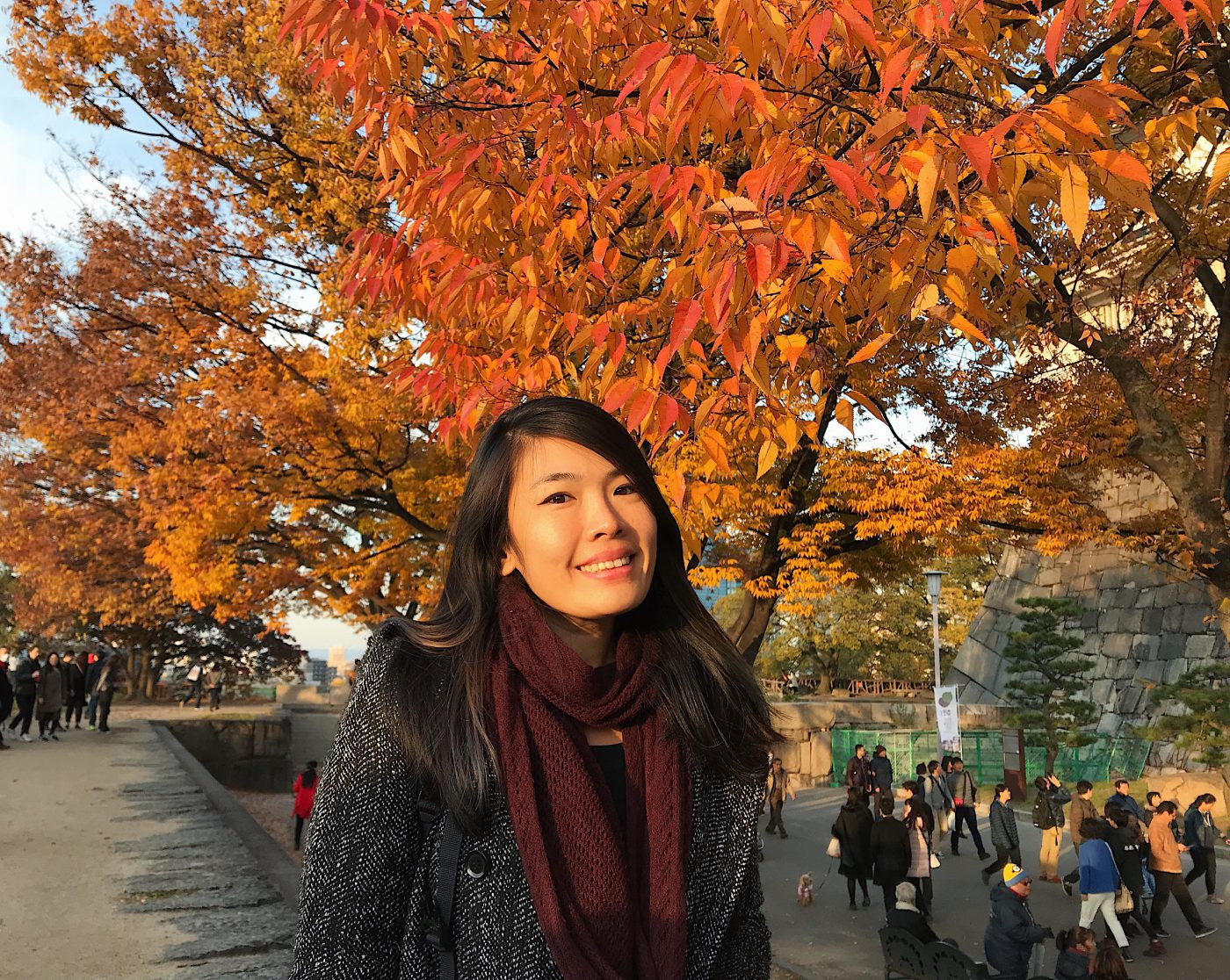 Osaka Castle
Osaka Castle
The majestic Osaka castle in the fall season.
15. More Useful Posts About Japan
For more detailed information and travel tips, check out the following resources:
- Tokyo Travel Guide
- Kyoto Travel Guide
- Osaka Travel Guide
- Hakone Travel Guide
- Fuji Five Lakes Guide
- Nara Travel Guide
Frequently Asked Questions (FAQs)
Q1: What is the best time to visit Japan for cherry blossoms?
The best time to see cherry blossoms in Japan is typically from late March to early April. However, the exact timing can vary depending on the region and the weather conditions.
Q2: How can I get around Japan efficiently?
The most efficient way to travel between major cities in Japan is by using the Shinkansen (bullet train). Within cities, utilize the local train and subway systems.
Q3: Is it necessary to speak Japanese to travel in Japan?
While it’s helpful to know some basic Japanese phrases, it’s not essential. Many signs are in English, and translation apps can assist you with communication.
Q4: What are some essential items to pack for a trip to Japan?
Essential items to pack include comfortable walking shoes, a portable charger, a universal adapter, and any necessary medications.
Q5: How can I book accommodations and transportation in advance?
SIXT.VN offers convenient services for booking accommodations, airport transfers, and rental cars in Japan. Booking in advance ensures you get the best options and prices.
Q6: Is it customary to tip in Japan?
No, tipping is not customary in Japan and can sometimes be seen as rude.
Q7: What are some popular souvenirs to buy in Japan?
Popular souvenirs include traditional crafts, ceramics, tea, and local snacks.
Q8: How can I stay connected to the internet in Japan?
You can stay connected by purchasing a data eSIM, renting a pocket Wi-Fi device, or using free Wi-Fi hotspots.
Q9: What are some cultural experiences I should not miss in Japan?
Don’t miss experiences like visiting a traditional tea house, attending a sumo wrestling match, and staying in a ryokan (traditional Japanese inn).
Q10: How can SIXT.VN help me plan my trip to Japan?
SIXT.VN offers expert travel advice, convenient booking services for accommodations and transportation, and curated tour packages to help you create an unforgettable journey through Japan.
Let SIXT.VN Enhance Your Travel Itinerary to Japan
Planning a trip to Japan can be overwhelming, but with SIXT.VN, you can ensure a seamless and unforgettable experience. We offer a range of services tailored to meet your needs, including:
- Airport Transfers: Start your journey stress-free with our reliable airport transfer services.
- Hotel Bookings: Choose from a wide selection of hotels to suit your budget and preferences.
- Car Rentals: Explore Japan at your own pace with our car rental options.
- Tour Packages: Discover the best of Japan with our curated tour packages.
Contact SIXT.VN today to start planning your dream travel itinerary to Japan!
Address: 260 Cau Giay, Hanoi, Vietnam
Hotline/WhatsApp: +84 986 244 358
Website: SIXT.VN



